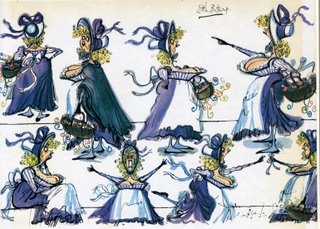

John Foster, who played Bouncer in the production, called the run-through at Burnand's house a rehearsal. My own recollection of the business is perfectly distinct". A printed programme dated 23 May later surfaced, suggesting more than a mere rehearsal, but the composer himself supported the later date, writing to The World: "I feel bound to say that Burnand's version came upon me with the freshness of a novel. Andrew Lamb has concluded that the run-through at Burnand's home on, without costumes or sets, was a rehearsal before a small group of invited friends, followed by the first performance at Lewis's home on. The date and venue of the first performance was much disputed, starting in 1890, in duelling letters to The World, with Burnand and Lewis each claiming to have hosted it. Secondly, Burnand wrote original lyrics to be set to music by the 24-year-old Sullivan. This change was necessitated by the intention of performing the piece for the all-male gathering of the Moray Minstrels. First, in the play the protagonists lodge with Mrs Bouncer in Burnand's version the character is Sergeant Bouncer. The text follows Morton's play closely, differing in only two notable respects. īurnand adapted the libretto for this "triumviretta" from John Maddison Morton's famous farce, Box and Cox, which had premiered in London in 1847, starring J. After seeing another operetta at Moray Lodge the following winter, Burnand asked Sullivan to collaborate on a new piece to be performed for the Minstrels. On one occasion in early 1865, they heard a performance of Offenbach's short two-man operetta Les deux aveugles ("The Two Blind Men").

Burnand and many other members were friendly with young Arthur Sullivan, who joined the group. The Minstrels would discuss the arts, smoke and sing part-songs and other popular music at monthly gatherings of more than 150 lovers of the arts their conductor was John Foster. They would meet for musical evenings at Moray Lodge, in Kensington, the home of Arthur James Lewis (1824–1901), a haberdasher and silk merchant (of the firm Lewis & Allenby), who married the actress Kate Terry in 1867. The Moray Minstrels were an informal gathering of notable men involved in London society and the arts, including painters, actors and writers, who were mostly amateur musicians. Playbill from a New York production of Box and Cox
#Buttercup song gilbert sullivan professional
It has been played by numerous professional and amateur companies throughout the world and continues to be frequently produced. During the 20th century, it was frequently played by the D'Oyly Carte Opera Company in an abridged version, as a curtain raiser for the shorter Gilbert and Sullivan operas. Once given a professional production in 1869, it became popular, running for 264 performances and enjoying many revivals and further charity performances. The piece premiered in 1866 and was seen a few times at charity benefits in 1867. Sullivan wrote this piece five years before his first opera with W.

When one of them has the day off, they meet each other in the room and tempers flare. The story concerns a landlord who lets a room to two lodgers, one who works at night and one who works during the day. It was Sullivan's first successful comic opera. Burnand and music by Arthur Sullivan, based on the 1847 farce Box and Cox by John Maddison Morton. Poster for the 1869 production at the Royal Gallery of IllustrationĬox and Box or, The Long-Lost Brothers, is a one-act comic opera with a libretto by F.


 0 kommentar(er)
0 kommentar(er)
